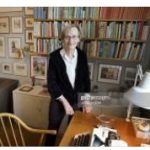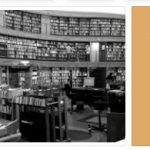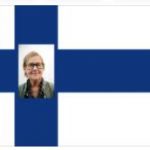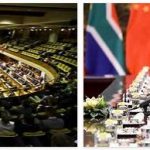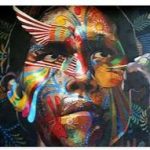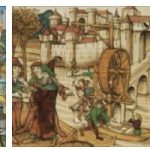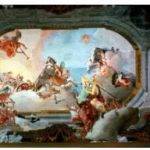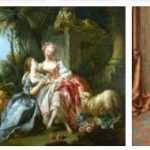20th century
Under the influence of H. Bergson’s philosophy, the final break with the aesthetics of neo-romanticism took place. The psychologically deepened portrayal of society determined prose in the second decade of the 20th century. Elin Wägner, S. Siwertz and Sven Lidman describe bourgeois life in their realistic novels. Both from a narrative point of view and from a psychological point of view, H. Bergman must be regarded as the most important prose writer of this generation. The first group of self-taught authors made their debut between 1910 and 1920: M. Koch, K. F. Månsson and Gustav Hedenvind-Eriksson (* 1880, † 1967) That as “Proletärförfattare” (“worker poet”) called in the time of the First World War, the Swedish labor poetry into life, a well of poetry (Erik Lindorm, * 1889, † 1941; Ragnar Jändel, * 1895, † 1939) co-sponsored motion. V. Ekelund’s poems, which were influenced by the Swedish landscape, European aestheticism and ancient educational tradition, became a model for a whole generation of sensitive poets such as A. J. Österling, Sten Selander (* 1891, † 1957) and Karl Asplund (* 1890, † 1978), while Birger Sjöberg (* 1885, † 1929) in his poetry, which prepares modernism, ironically reflects the idyllic (»Kriser och kransar«, 1926). The poetry collection »Ångest« (1916) by the young P. F. Lagerkvist is considered to be the beginning of modern poetry in the narrower sense. Further impulses came from Finland (including Edith Irene Södergran, E. R. Diktonius). Lagerkvist developed a pacifist confessional poetry in his novels and dramas, the anti-fascist and Christian elements of which had a significant influence on Swedish intellectual history. The narrative prose of the 1920s and 30s is largely shaped by the second generation of autodidactic authors. The primitivism of the “Fem Unga” (“Five Boys”), announced in 1929 – N. A. Lundkvist, H. E. Martinson, G. E. Sandgren, Erik Asklund (* 1908, † 1980) and J. Kjellgren - stands out from a multitude of literary programs. Autobiographical and historical themes were preferred, often in novel cycles. C.A.V. Moberg described Swedish fates in America in his emigration cycle, while I. Lo-Johansson, J. Fridegård and Moa Martinson stood up for the unfree cottagers. H. E. Martinson and E. O. V. Johnson began writing autobiographical novels. In Johnson’s later historical novels, the historical subject can always be understood as a parable for contemporary problems. F. G. Bengtsson showed satirical humor in his historical novels, which Nils Fritiof Nilsson (* 1895, † 1972) turned into the deeply grotesque. The tradition of bourgeois realism connected O. Hedberg, Walter Ljungquist (* 1900, † 1974), Sven Johan Stolpe (* 1905, † 1996), Stina Aronson (* 1892, † 1956) and Arvid Brenner (* 1907, † 1975) with a new psychological mysticism. The poets of the 1930s (H. Gullberg, J. Edfelt, Karin Maria Boye, N. J. E. Ferlin and others) used elements of everyday language in their formally mostly traditional poems. The work of G. Ekelöfs, the “classic” modern poet, were among others. shaped by oriental philosophy and music. In the 1940s, poetry received new impulses. Inspired by Anglo-Saxon and French models as well as their own modern traditions (Sjöberg, Ekelöf), among others W. Aspenström, Elsa Grave (* 1918, † 2003) and v. a. E. Lindegren and K. G. Vennberg new experimental poems influenced by symbolism and surrealism. The work of F. Kafkas and E. Hemingway works in the narrative prose Thorsten Jonssons (* 1910, † 1950), S. Dagermans and L. Ahlins. In her work, that internalization and turning away from the ideological can already be felt that shortly after the Second World War and in the 1950s, among other things. by W. Kyrklund, LW Gyllensten and Birgitta Defensig. A completely new direction in poetry began in the late 1950s with concrete experiments (including C. F. Reuterswärd; Erik Beckman, * 1935). In the 1960s, new literary forms emerged, such as the documentary novel represented by P. O. Sundman and P. O. Enquist. In addition, many authors made use of non-fictional genres such as reportage, protocol, interview, report (e.g. Göran Palm, * 1931, † 2016; Sara Lidman). The problems of the modern world and the Swedish welfare state were addressed by P. G. Evander, Stig Claesson, L. Gustafsson and P. C. Jersild. A critical view of Swedish society was also evident in the crime novels Maj Sjöwalls and P. Wahlöös. Astrid Lindgren achieved international importance as a children’s book author. T. G. Tranströmer, Nestor of contemporary Swedish poetry, has been developing a differentiated visual language with, in part, surrealistic features since the 1950s. The modernist tradition of lyric poetry also lead Bo Setterlind (* 1923, † 1991) and Östen Sjöstrand (* 1925, † 2006), while the representatives of the »nyenkelhet« (»new simple direction«), among others. Sonja Åkesson and Palm, strive to be closer to social reality. In the work of Göran Sonnevi (* 1939), one of the most important contemporary poets, political engagement and linguistic critical reflection are combined.
Recent developments
Since the mid-1970s, according to hyperrestaurant, there has been a reorientation within narrative prose: a return to large-scale epic forms, to historical themes and to psychological portrayals of people. In addition to the style-forming works of S. Delblanc, Kerstin Ekmans, Sara Lidmans and Enquists, numerous socio- historical novels and novel cycles were created. The authors Ann-Charlotte Alverfors (* 1947, † 2018) and Gerda Antti (* 1929) showed new ways of haunting psychological personal representation. There is also a trend towards more experimental forms: the works of K. Östergren, Jacques Werups (* 1945, † 2016), Torgny Lindgrens (* 1938, † 2017) and Ernst Brunners (* 1950) are characterized by a sense of comedy and humor, the combination of the everyday with the fantastic and a great joy in telling stories. Showing ways to an independent narrative language v. a. L. G. Andersson, who creates the connection between the individual search for identity and the social environment, and Per Odensten (* 1938) in his suggestive prose epic »Gheel« (1981, German).
The reorientation of the naturalistic family drama by means of haunting, psychologically sound personalization succeeded the playwright L. Norén, who since the 1990s has increasingly dealt with the institutionalization and bureaucratization of society.
Within the epic, a magical realism could be observed in the 1980s, often influenced by the important Latin American poets of the 20th century, to which some new ones (G. Tunström; Peter Nilsson, * 1937, † 1998) were already established Authors such as Birgitta Potsig and Enquist contributed, while Lindgren and L. Gustafsson used the various possibilities of “postmodern” narration. In addition, the focus was on urban space as an unmanageable and attractive world of symbols (Ulf Eriksson, * 1958; Katharina Frostensen, * 1953; Aris Fioretos, * 1960). Hermetic and linguistic experimental tendencies emerged in poetry (Eva Runefeld, * 1953; Stig Larsson; Ann Jäderlund, * 1955).
Historical and biographical material has been rediscovered in prose literature since the 1990s, for example in the novels by P. O. Enquist and in the factual and fictional texts by Ola Larsmo (* 1957) and Steve Sem-Sandberg (* 1958), as well as in poet biographies by E. Brunner and Carina Burman (* 1960). Crime novelists are also successful, including H. Mankell, H. Nesser, Stieg Larsson and L. Marklund.

